Processing Your Payment
Please do not leave this page until complete. This can take a few moments.
- News
-
Editions
View Digital Editions
Biweekly Issues
- November 17,2025
- November 03, 2025
- October 20, 2025
- October 6, 2025
- September 22, 2025
- September 8, 2025
- + More
Special Editions
- Lists
- Viewpoints
-
Our Events
Event Info
Award Honorees
- Calendar
- Biz Marketplace
Foot race | Neighborhoods' 'walkability' adds value, on and off the books
“Charting the Course” is written by GrowSmart Maine, a Portland nonprofit that promotes and encourages new ways of thinking about Maine’s future.
GrowSmart Maine recently moved its offices from the Sparhawk Mill building in the village center of Yarmouth to an office building full of nonprofit tenants in downtown Portland. We’ll miss working in a historic building with stunning views of the Royal River and its wildlife. But we definitely don’t miss the commute.
Now, instead of spending a tiring, stressful and not-inexpensive hour in our cars every workday, most of us are able to enjoy a 15-minute walk to the office through Portland’s historic and vibrant neighborhoods.
As an improvement to the quality of our lives, the daily exercise and extra leisure time is significant enough. But it’s also resulted in big savings in our daily costs of living. At the federal reimbursement rate, a daily commute between Portland and Yarmouth — 24 miles roundtrip — costs over $3,000 a year in gasoline, insurance, maintenance, increased risk of accidents and other costs. Notably, that doesn’t include the costs of air pollution, or of time wasted in traffic.
By moving the office within walking distance, though, we’ve cut our commuting costs to near zero. Because we now enjoy a lower cost of living and more leisure time, we also enjoy more disposable income, even though our actual incomes have remained steady. These kinds of off-the-balance-sheet benefits typically result in higher productivity and lower turnover for employers. On the balance sheet, our organization as a whole is in better financial shape, too, since we don’t need to rent or maintain as many parking spaces as we otherwise would.
On the map
These benefits may seem relatively intangible, but two recent empirical studies of various real estate markets nationwide found that the “walkability” of a neighborhood has a statistically significant, positive influence on home prices and commercial rents.
Both studies used “Walk Score,” a Google Maps-based application that calculates how many shops and services are located within walking distance of a given address, and uses that data to rank the location’s walkability on a scale between zero and 100.
The application’s not perfect (it has no way to determine whether a neighborhood has sidewalks, for instance), but its scores generally confirm most peoples’ perceptions of whether or not an area is “walkable.” My childhood home in rural Steep Falls, where my family never, ever walked to run daily errands, scores a zero. But Waterville and downtown Rockland’s Main Streets both score a 98 out of 100, while small-town Main Streets in Houlton, Caribou, Bethel and Norway all score as “very walkable” in Walk Score’s calculations.
In some cities, real estate agents have begun promoting high walk scores as a selling point for in-town homes and storefronts, which leads to the central question of these studies: Do higher walk scores really translate into higher real estate values?
Adding value
To find out, researcher Joe Cortright analyzed 15 housing markets nationwide and found a statistically significant relationship between home values and neighborhood walk scores. He published his results in a report called “Walking the Walk,” published by the Chicago-based group CEOs for Cities.
Cortright analyzed thousands of real estate transactions and controlled for dozens of housing-characteristic variables to examine the effects of neighborhood walkability on home prices. The analysis revealed that, when comparing otherwise similar homes in otherwise similar neighborhoods, homes in the more walkable neighborhoods commanded a price premium of between $4,000 and $34,000 in most metropolitan areas.
A CEOs for Cities press release announcing the results included this quote from Cortright: “Even in a turbulent economy, we know that walkability adds value to residential property just as additional square footage, bedrooms, bathrooms and other amenities do. It’s clear that consumers assign a tangible value to the convenience factor of living in more walkable places with access to a variety of destinations.”
Of course, these findings have big implications for municipal leaders, developers and planners. By investing in sidewalks and building pedestrian-friendly new developments, officials and business leaders can boost property tax revenues, increase disposable incomes and generate new wealth for their communities.
You can check the walk score of your own home or workplace at www.WalkScore.com.
Christian McNeil can be reached at cmcneil@growsmartmaine.org.
Read past columns from GrowSmart Maine >>
Mainebiz web partners

The Giving Guide
The Giving Guide helps nonprofits have the opportunity to showcase and differentiate their organizations so that businesses better understand how they can contribute to a nonprofit’s mission and work.
Learn More
Work for ME
Work for ME is a workforce development tool to help Maine’s employers target Maine’s emerging workforce. Work for ME highlights each industry, its impact on Maine’s economy, the jobs available to entry-level workers, the training and education needed to get a career started.
Learn More
Groundbreaking Maine
Whether you’re a developer, financer, architect, or industry enthusiast, Groundbreaking Maine is crafted to be your go-to source for valuable insights in Maine’s real estate and construction community.
Learn more-
The Giving Guide
The Giving Guide helps nonprofits have the opportunity to showcase and differentiate their organizations so that businesses better understand how they can contribute to a nonprofit’s mission and work.
-
Work for ME
Work for ME is a workforce development tool to help Maine’s employers target Maine’s emerging workforce. Work for ME highlights each industry, its impact on Maine’s economy, the jobs available to entry-level workers, the training and education needed to get a career started.
-
Groundbreaking Maine
Whether you’re a developer, financer, architect, or industry enthusiast, Groundbreaking Maine is crafted to be your go-to source for valuable insights in Maine’s real estate and construction community.
ABOUT
NEW ENGLAND BUSINESS MEDIA SITES
No articles left
Get access now
In order to use this feature, we need some information from you. You can also login or register for a free account.
By clicking submit you are agreeing to our cookie usage and Privacy Policy
Already have an account? Login
Already have an account? Login
Want to create an account? Register
Get access now
In order to use this feature, we need some information from you. You can also login or register for a free account.
By clicking submit you are agreeing to our cookie usage and Privacy Policy
Already have an account? Login
Already have an account? Login
Want to create an account? Register
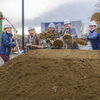
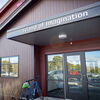
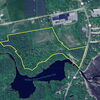
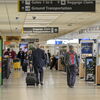

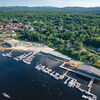

Comments